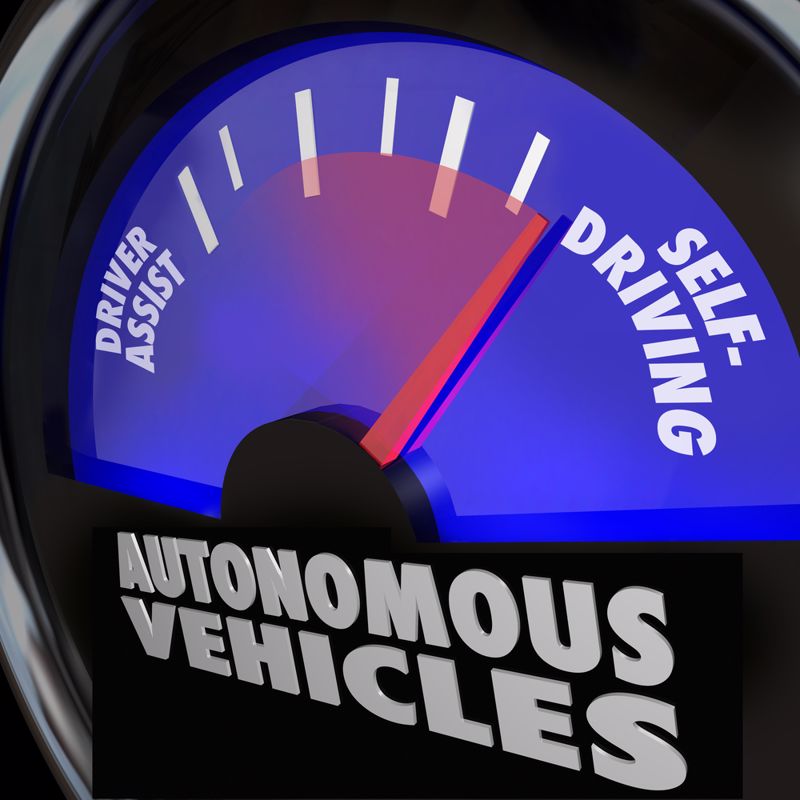

The autonomous vehicle space is one that carries with it a lot of promise for the kind of more convenient future of transport that has long been promised in science fiction. Increasingly, the things that seemed like the provenance of a far-off time are becoming common on roadways around the world, but the technology needed to support widespread reliance on AVs is still very much a work in progress - and likely will be for some time to come.
While the strides in this arena have been significant over the past several years, there is a broad understanding that the technology is hardly a finished product, according to a recent study from the Insurance Institute for Highway Safety. Right now, it seems these systems are largely able to identify the conditions that will lead to a car accident on the road, but not necessarily respond in time to prevent the crash.
This is due, in large part, to the fact that driver error is what causes 90% of current crashes, the IIHS study found. However, based on current technology, only about 1 in every 3 of those crashes could be avoided with automated driving systems - meaning eventually these vehicles will have to be not just as good as human drivers, but better.

Getting the basics right
In fact, some of these hurdles remain because automated systems that aren't even as good at the absolute basic of driving competency that most children can handle: recognizing traffic lights, according to The Brake Report, citing findings from a recent study by researchers at Kanazawa University in Japan. A big issue that many such systems struggle with is understanding the complexities of various types of stop lights, for the simple reason that these signals can vary in size, location, what they are indicating (i.e., with red or green arrows) and so on.
The problem, is that in many cases, automated vehicles may need to be able to identify what these lights are communicating to drivers - for instance, recognizing a green light turning to yellow potentially hundreds of feet away - and reacting appropriately, well before it actually reaches the intersection, the report said. Add in the need to interpret what other vehicles are doing simultaneously, and the systems may not always be able to make the right decisions in an appropriate time period.
Researchers were able to create an algorithm that helped autonomous vehicles in their study do a better job of understanding these signals from as much as 150 meters - nearly 500 feet - away from the signal, the report said. Keisuke Yoneda, the study's lead author, noted that this reduced "false positives" in recognizing what the lights were communicating, down to images in which arrows were smaller than 10 pixels.
Growing the AV economy
It's also worth noting that the odds of autonomous vehicles becoming more ubiquitous as buy-in from the tech world proliferates, and with that in mind, the entry of one of the biggest names in the sector into this space is a potential game-changer, according to The Motley Fool. Amazon recently made the decision to acquire the driverless vehicle company Zoox, with the obvious hope that it would be able to leverage the technology the startup has developed to cut delivery costs on a number of fronts.
Specifically, Zoox was developing systems designed for small ridesharing networks, rather than mass commercial use, and there's an obvious practical application for Amazon deliveries, the report said. Moreover, the company's specialized vehicles contain two batteries (enabling longer drive times) as well as a combination of cameras, radar and lidar to interpret the environment around it, potentially making it more responsive and effective than some of its competitors.
Regulating the sector
With so much changing in the autonomous vehicle space so rapidly, experts also worry about the legal implications of even small amounts of real-world testing, and believe more may need to be done to ensure the sector is properly regulated, according to Bloomberg Law. Specifically, it seems as though regulators may need to do more to put controls in place for software development.
That may be particularly true because many AV systems are based on open-source software, which is widely available for free to anyone who wants to use it, the report said. But if the proprietary software to operate these vehicles is based on open-source code, questions of liability may quickly arise.
"There's little law governing open-source licenses, meaning that disputes can be difficult to sort out and expensive to litigate," attorney Heather Meeker told Bloomberg. "The licenses often disclaim liability, leaving downstream manufacturers potentially on their own. While open-source license warranty disclaimers may be enforceable, the law is uncertain."
The more that can be done by developers, regulators, safety officials and so on can do to ensure these vehicles are both safe for use and covered by reasonable rules and laws, the better off drivers are likely to be as self-driving cars become more ubiquitous.
Greening Testing Laboratories is a fully certified brake testing lab that provides a variety of brake testing services worldwide. Contact Greening Associates for a complimentary consultation.